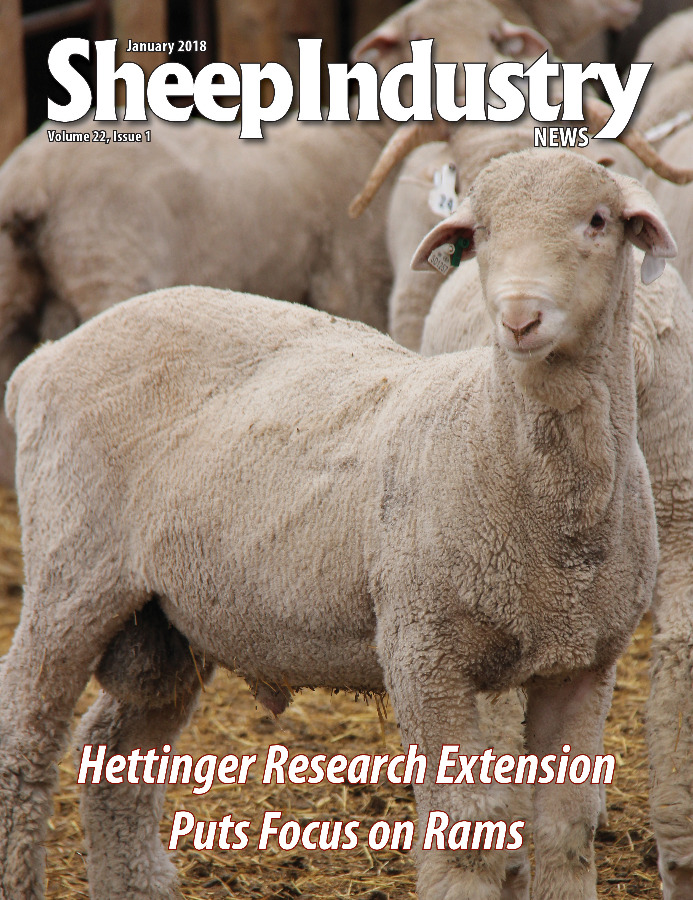
- January 2018
- President’s Notes
- Jerry King Cartoon
- Defining Lamb
- Ram Focused Research Keeps Hettinger Busy
- Menzies, Kent Selected for Wool Excellence Awards
- Let’s Grow Update: California Range Ram Index
- American Wool Exports Increase
- Data Drives Meinders Farm
- The Minnesota Project
- Obituary: Samuel Chournos
- Market Report
- The Last Word
American Wool Exports Increase
American wool exports rebounded strongly in Market Year 2017 (Oct. 1, 2016 to Sept. 30, 2017) with a 24-percent increase in total exports to 8.64 million lbs. clean weight compared to the previous market year.
The American Sheep Industry Association cooperates with the U.S. Department of Agriculture’s Foreign Agricultural Service program. The program’s purpose is to promote American agriculture internationally.
“The FAS program has been vital in the expansion of American wool exports to other countries. With this matching fund program, ASI is allocated approximately $1 million each year and it has been key to bringing foreign wool companies to the United States, as well, as other promotional programs to export American wool,” says ASI Wool Marketing Director Rita Samuelson.
American wool exports increased 29.5 percent to $22.6 million U.S. dollars. Greasy wool exports accounted for 74.8 percent of total exports. Assuming that American wool production in 2017 remains the same as it was the previous year (25.7 million lbs. greasy), then 67.2 percent of the total clip was exported – up from 54.2 percent the previous year.
China remains the No. 1 export destination with a very significant increase of 51.3 percent in United States exports to 4.39 million lbs. clean. This amounts to 50.8 percent of all exports compared to MY2016’s level of 41.7 percent. Western Europe took the No. 2 destination from India with a 7.9-percent increase to 1.18 million lbs. clean and a 13.7-percent share in U.S. exports. Exports to India reduced by 28.1 percent to 993,800 lbs. clean and an 11.5-percent share of total exports.
Eastern Europe became the No. 4 destination, mostly due to Bulgarian imports of greasy wool. The region saw a 32.1-percent increase in American wool imports to 896,800 lbs. clean, amounting to a 10.4-percent share of total U.S. exports.
Stronger world demand and steady world wool production resulted in record wool prices as indicated by the Australian Eastern Market Indicator. In U.S. dollars, this represented a 30.7-percent increase year-on-year as of early November, and prices have continued to increase heading into the Christmas recess. No doubt this high level of market activity was a factor in the increase of American wool exports. As there was only a 0.3-percent change year-on-year in the exchange rate (U.S. dollar to Australian dollar), this had very little, if any, effect.
The wool pelts market improved slightly by volume by 1.4 percent to 1,029,704 pieces (pelts only). Importantly, the average unit price per pelt level improved to $14.66 versus $13.89 the previous year. In dollar terms, the increase was 7.1 percent to $15,101,148, reflecting the gradually improving unit price level. This is a significant increase from the low in recent years (2015) of $10.62. Prior to 2013, this average unit price level has been as high as $15 to $18.

